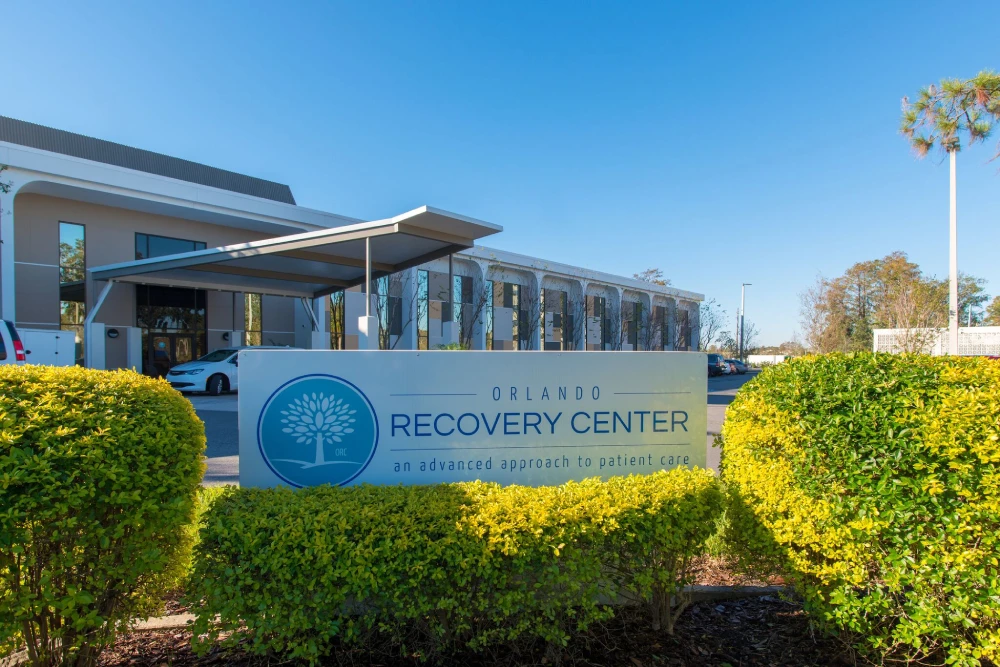If you are struggling with amphetamine addiction, know that there is hope to begin your life with a clean slate starting with withdrawal and detox.
You may think that a life without amphetamines is impossible considering how accustomed you may have become to having them. However, a life without amphetamines is possible. A drug-free lifestyle is achievable when you begin the detox process. A complete detoxification process can take anywhere from several days to a few weeks, so don’t be discouraged if changes are not felt immediately. At The Recovery Village, we offer the support and resources you need to make your detox possible and then continued to help you lead the way to your recovery.
Amphetamine Withdrawal Symptoms and Signs
As withdrawal begins to run its course, you may notice some drastic changes in your behavior and in your state of mind. As the amphetamines exit your body, your brain chemistry changes immensely. Amphetamines are psychiatric drugs, which alter the chemical makeup of the brain. As your amphetamine addiction grew, your brain adapted to the drug’s presence and all of its chemical effects.
As you begin to wean off of the amphetamines, your brain can go into shock. Due to the fact that it is not used to functioning without the drugs, your brain may feel like it is not running properly. This feeling is one of the largest reasons why withdrawal can be such a difficult process because you are essentially reworking your brain. During withdrawal, you can face an abundance of side-effects.
The kinds of symptoms you experience and the severity of them will depend on many different factors, including:
- How long you have been using amphetamines
- The dosage of the amphetamines
- Age
- Height
- Gender
- Physical health
- Psychological health
- Your chosen method of detoxification (such as tapering or quitting cold turkey)
Amphetamine Withdrawal Timeline
Individuals who decide to take the first step toward recovery should be proud of their decision, yet understand that they need to be patient during this process. Every person who misuses amphetamines can react differently to detoxification. With that in mind, our team at The Recovery Village will make sure that your treatment process is tailored specifically to you.
While it may take some people a few weeks to complete the detoxification process, it could take other people longer amounts of time. Everyone is different, but what matters most is that you are headed in the right direction, toward sobriety. To get a better idea of the process, let’s take a look at this typical timeline for a complete detox from amphetamine drugs:
It is important to remember that this is not a set timeline of how your amphetamine detox will progress. Instead, view this as a guide to help you understand the detox process better. Specific recovery times vary for each person. It all depends on your own individual situation and your own chemical makeup. Recovery is not a race, so be proud of yourself for working towards recovery.
Experiencing some setbacks is a common part of the recovery process. Do not give up. It may take you more than one round of amphetamine detox to enter and maintain recovery. This is more common if you attempted your first detox experience at home and without proper medical supervision. At-home detox presents a number of additional difficulties that you wouldn’t face at an accredited detox center. The Recovery Village offersinpatient treatmentwith 24-hour care by trained medical professionals to ensure your detox is safe, secure, and more likely to succeed. If an inpatient center is not an available choice for you,outpatient treatmentis also an option that is available to you.
Another problem with attempting a detox at home is the fact that many people choose to do it cold turkey. Quitting cold turkey means suddenly stopping amphetamine intake, rather than gradually weaning off of the drug. This method can cause intense symptoms to appear sooner and be more detrimental to your detoxification process and overall recovery. To avoid any unnecessary setbacks, seek proper medical attention at adetox center closest to youfor professional help.
On rare occasions, an unsupervised detox attempt can result in death, particularly when heroin or alcohol are also being misused. In addition to this risk, there could be an underlying mental illness that was masked by the presence of the drug. For example, the presence of depression can cause suicidal thoughts. To prevent these kinds of dangerous situations, it’s important to go undergo a medically-supervised amphetamine detox.
Amphetamine Withdrawal Medications
In some cases, doctors may recommend the use of pharmaceuticals to help you on your detox journey. Depending on the symptoms that accompany your amphetamine withdrawal, there are various medications that can be used to help alleviate those symptoms and allow you to focus on your detox. Some medications commonly used are:
Amphetamine Detox: How to Safely Detox
To begin your amphetamine detox, you must first go through an evaluation. This step is critical in beginning your journey toward recovery. During this step, a medical professional will evaluate your symptoms and your usage of amphetamines to determine the proper detox and treatment plan.
After the evaluation is detoxification. This stage begins as soon as you stop misusing amphetamines. Your body begins to work hard in order to rid itself of the drug. There are several different detox programs available and it’s important to find one that’s right for you. Our staff at The Recovery Village is available to help you through the ups and downs of the detoxification process and to make it as comfortable as possible.
Once detoxification is complete, the process does not end. Continuing with aftercare is crucial to your success. While your body may be physically rid of amphetamines, your mind is still recovering. During this time it is pivotal to learn and embrace strong sober living tools that will help you resist the temptations of amphetamine usage.
- Visit the following websites to learn about The Recovery Village’s network of rehabilitation facilities. Call today for admissions. Each center is ready to help people learn how to cope with their addiction and uncover the root causes for their substance use disorder.
- Orlando Recovery Center: A premier rehabilitation facility in Orlando, Florida that helps individuals recover from addiction and substance use disorders. The center also offers the opportunity to treat co-occurring disorders.
- The Recovery Village Columbus: Located in Ohio,this facility provides inpatient, outpatient and aftercare treatment for people looking to begin detox. The center provides individualized plans to help patients through recovery while addressing their unique co-occurring disorders or any setbacks that may happen during recovery.
- The Recovery Village Palmer Lake:In Colorado, this facility offers inpatient, outpatient and intensive outpatient treatment for individuals looking to kick-start their journey to recovery.
- The Recovery Village Ridgefield: Located right in southern Washington,this facility provides patients with outpatient and aftercare programs. Just 20 minutes outside of Portland, this facility assists individuals who are ready to begin treatment.
- The Recovery Village: In Umatilla, Florida,this is a rehabilitation facility that provides resources for individuals seeking drug and alcohol treatment. There are inpatient, outpatient, intensive outpatient and partial hospitalization treatment programs available for those suffering from Ambien addiction.
- IAFF Center of Excellence:Specializes in assisting firefighters who struggle with behavioral health problems and addiction. Members can enter the recovery process sooner so they can return back to work as quickly as possible. Inpatient, partial hospitalization and intensive outpatient programs are all available at this facility, where patients can address their Ambien addiction in a safe, supportive environment.
- Denver Mental Health & Counseling: Denver Mental Health and Counseling by The Recovery Village is a physician-led outpatient center specializing in evidence-based addiction and mental health treatments, offering services such as TMS, IOP, and personalized care for both ongoing and new patients, dedicated to fostering long-term recovery and overall well-being.
- The Recovery Village Palm Beach at Baptist Health: The Recovery Village Palm Beach at Baptist Health is a premier physician-led treatment center in South Florida, offering a comprehensive spectrum of services from medical detox to outpatient programs for alcohol, drug, and co-occurring mental health conditions, with a commitment to rejuvenating lives, families, and communities, and facilitating same-day admissions.
- The Recovery Village Atlanta: Located in Roswell just outside downtown Atlanta, is a 62-bed physician-led treatment facility offering a comprehensive range of services, from medical detox to outpatient care, specializing in alcohol, drug, and co-occurring mental health conditions, dedicated to transforming lives, families, and communities throughout Georgia.
- The Recovery Village Kansas City: The Recovery Village Kansas City, an 80-bed facility in Raytown just 10 miles from downtown, offers a comprehensive range of evidence-based treatments for addiction and mental health conditions, overseen by physician leaders, and is dedicated to revitalizing lives, families, and communities throughout the Midwest.
- The Recovery Village Cherry Hill at Cooper Health: The Recovery Village Cherry Hill at Cooper, situated just 20 minutes from Philadelphia, is a leading rehab facility in South Jersey providing comprehensive, evidence-based addiction and mental health treatments, ranging from medical detox to teletherapy, with a dedicated team committed to guiding adults on their path to lifelong recovery.














